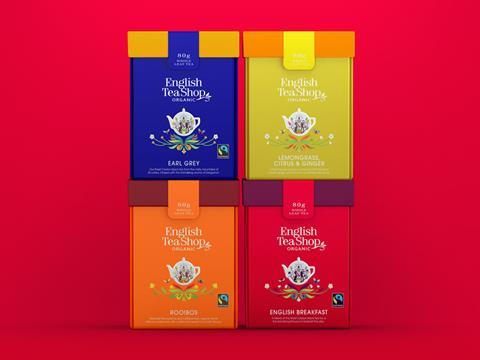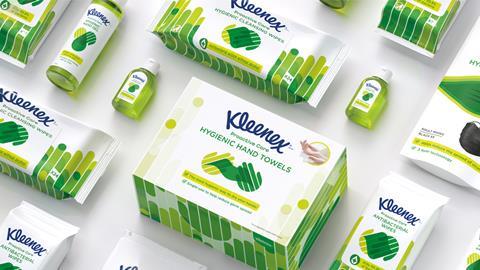From user experience to sustainability and e-commerce, 2020 reshaped and accelerated many key trends in the world of packaging design. In the first installment of a two-part series, we talk with Andrew Capper, co-founder and creative director of brand design agency Echo, to unpack some of the key lessons learned from a pivotal year for the industry.
The biggest news of last year for all industries and sectors was obviously COVID-19. Broadly speaking, how has this trend affected the field of packaging design?
Packaging is not an industry that is always able to respond quickly, due to the nature of investment and production lines. Nonetheless, several of our client partners, particularly those in the personal hygiene space, accelerated existing or fast-tracked new projects to meet consumer needs, all whilst everyone dealt with lockdown and the logistical headaches of whole teams working from home.
Take Kleenex, for example. Responding to the urgent need for new rituals around hand hygiene, the brand conceived, produced and launched its Proactive Care range in less than five months. As the design team behind the packaging, we learned just how far working under immense time pressure, to create something that consumers genuinely need, can produce the most effective results.
COVID certainly changed people’s buying habits, creating extremes of behaviour. A focus on the basics, like hygiene, as people started panic buying in March, made way for comforting and indulgent brands and products as pubs and restaurants closed.
More specifically, how has COVID affected agencies in terms of ways of working?
We’re working hard at working together. Almost NINE months of remote working has required the adoption of new digital tools to ensure that we can still fan the flames of collaborative creativity and deliver the best strategic thinking, combined with powerful design.
While there have been undeniable challenges, there are also benefits to working from home. Because we no longer have the luxury of bouncing ideas ad-hoc or looking over a colleague’s shoulder, we’ve all had to become more structured in our thinking and organised in the way we share our ideas. I believe it’s made us think more deeply and more efficient to boot.
A trend that grew in prominence last year in relation to COVID-19 is e-commerce. How has this affected packaging design?
COVID has certainly accelerated both omnichannel grocery and Direct-to-Consumer, which in turn impacts the role of packaging, as it is no longer designed for the shelf. For too long the product and pack have been the same as you’d buy in bricks and mortar retail, but, unshackled from our physical shopping baskets, we’re looking for something more. From the moment of delivery, a satisfying, immersive experience is everything.
We’re also seeing a greater willingness to explore far more radical concepts in order to deliver on this. New closed-loop offers, durable packaging, and refill systems have emerged that have the ability to offer brands more interactive, on-going dialogue with consumers.

One positive aspect of 2020 was the commitment from many key brand owners and manufacturers to keep a focus on sustainability, even in the face of the pandemic. Could you give us an overview of sustainability in the field of packaging design in 2020?
Whilst it’s been an incredibly challenging year for everyone, in the context of the seismic shift required to meet global sustainability goals, it’s a bump in the road. Most of these shifts to alternative materials, formats, or closed-loop systems have been promised over many years at a cost of many millions.
What’s more disturbing is how easily we, as consumers, relegated making those more ethical and ecological choices in the face of COVID, as we focused instead on health and wellness, despite global warming being a far more existential threat. Single-use plastic waste once again went through the roof, demonstrating just how fragile and fledgling our sustainable behaviours are and how far we have to go before they are automatic.
Are there any examples of best-in-class packaging designs from 2020 that stand out to you?
What stood out for me was BrewDog sticking two-fingers up to the ‘do-as-we-say, not do-as-we-do’ establishment with their Barnard Castle Eye Test beer. Capturing that quintessentially British dark humour, the brand designed a pack that embodies the ‘keep calm and carry on’ spirit in the face of adversity and injects a little laughter into an otherwise very serious situation.
Looking ahead, are there any particular trends/themes that you think might become more prominent in 2021?
Sustainability will once again be at the top of the agenda, with some lost ground to reclaim in 2021. With the continued war on plastic, expect to see an acceleration in new materials and borrowing formats from other categories
Also expect to see the role of packaging continuing to evolve, particularly at the extreme ends of the spectrum. From richer, more durable, and involved experiences of DTC, through to the deletion of packaging entirely and the rise of more packaging-free aisles and stores.


















